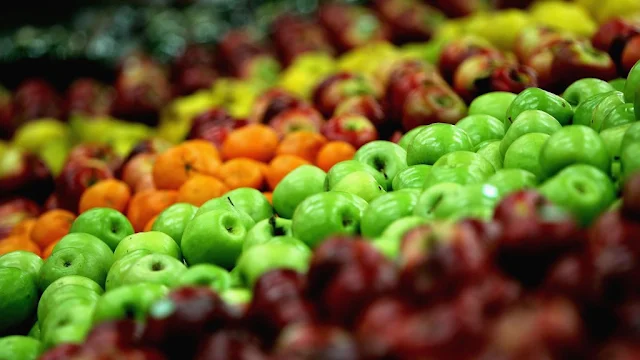🛒How Supermarkets Manipulate You into Spending More Money
When you walk into a supermarket, you might think you're making rational decisions based on the best deals and prices.
But did you know that supermarkets are meticulously designed psychological landscapes, created to influence your every choice?
They study consumer behavior and use that information to craft an experience that encourages you to buy more. It's a real-life lab experiment, and you're the test subject!
From the moment you walk in, simple tricks are used to catch your attention. You might see an incredible deal on blue cheese that's too good to resist. Supermarkets know that once they have you in the store for that one item, you'll almost certainly leave with a few extras.
Let's pull back the curtain on their playbook.
The Psychology of the Supermarket
Supermarkets are living laboratories that study human buying behavior. They know what day you like to shop and what specials you're likely to buy. This isn't guesswork; it's data science.
Ever heard of a loyalty card?
The data collected about your shopping behaviors is used to dissect your habits. They know you like to buy gas on the way home, which is why your receipt often comes with a fuel discount.
It's all designed to keep you coming back.
They even use in-store cameras, not just for security, but to monitor traffic patterns.
Where do you look first?
How do different demographics move through the store? This data is used to optimize the layout for maximum sales.
The classic example is placing essentials like milk, bread, and eggs at the farthest corners of the store.
This forces you to walk past thousands of other tempting products, increasing the chances of an impulse buy.
🎯Top Ten Manipulative Selling Practices of Supermarkets
| Rank | Manipulative Practice | Description |
|---|---|---|
| 1 | Strategic Product Placement | Essential items are placed at the back of the store, forcing customers to pass by numerous other products, potentially leading to impulse buys. |
| 2 | High-margin Items at Eye Level | Expensive and high-margin products are positioned at eye level, while cheaper alternatives are placed on lower or higher shelves. |
| 3 | Sale and Discount Misdirection | Supermarkets often use large, eye-catching signs for sales that may not offer real value, or they place limits on quantities to create artificial scarcity. |
| 4 | Sensory Manipulation | The use of pleasant smells (like freshly baked bread) and appealing visuals to evoke feelings of hunger or comfort, encouraging more purchases. |
| 5 | Time-limited Offers | Promotions that are presented as being available for a "limited time only" to create a sense of urgency and spur purchases. |
| 6 | Decoy Pricing | Offering three products at different price points to make the middle-priced item seem like the best value, despite not being the most economical choice. |
| 7 | Checkout Impulse Buys | Placing small, tempting items like candy, magazines, and sodas near the checkout area to grab your attention while you wait. |
| 8 | Confusing Layouts | Intentionally confusing store layouts that make it difficult for customers to find the exit without walking past many products. |
| 9 | Bulk Buying Traps | Promoting bulk purchases through deals like "buy one, get one free," which may encourage customers to buy more than they need. |
| 10 | Loyalty Manipulation | Utilizing loyalty programs to track purchasing behavior and target customers with specific promotions, leading them to spend more. |
🧠Diving Deeper: The Psychology Behind the Tactics
The "Loss Leader" and the Power of Anchoring
The "loss leader" strategy is a classic. A supermarket will offer a popular product at a very low price, often below cost, to attract you into the store.
This creates a psychological "anchor."
When you see that a product is incredibly cheap, it makes all the other prices in the store seem more reasonable in comparison.
It also leverages the "foot-in-the-door" technique; once you're in the store for that one great deal, you're much more likely to make other, full-priced purchases.

Sensory Overload: Smells, Sights, and Sounds
When you first walk into the store, you're often greeted by the vibrant colors of fresh produce and the smell of the in-store bakery.
This is intentional. Studies show that when people buy healthy food first, they feel licensed to treat themselves to more indulgent items later. The bright colors and delicious smells are designed to put you in a good mood and make you feel hungry.
Even the music plays a role; slower tempo music has been shown to make people walk more slowly, increasing the time they spend in the store and the likelihood of making additional purchases.
🛡️How to Fight Back and Save Money
So what can you do? Here are several ways to counter the psychological tricks supermarkets use to entice you to spend more:
- Make a List and Stick to It: This is your number one defense against impulse buys.
- Shop at Off-Peak Hours: A less crowded store means fewer distractions.
- Avoid Eye-Catching Displays: These are designed to derail your shopping list. Stay focused.
- Compare Prices: Don't assume a "sale" is a good deal. Compare the unit price to be sure.
- Shop at Different Stores: Different stores have different loss leaders and specials.
- Use Cash: When you use cash, you are more aware of the money you are spending.
- Don't Shop When You're Hungry: This is a classic for a reason. A hungry shopper is an impulsive shopper.
